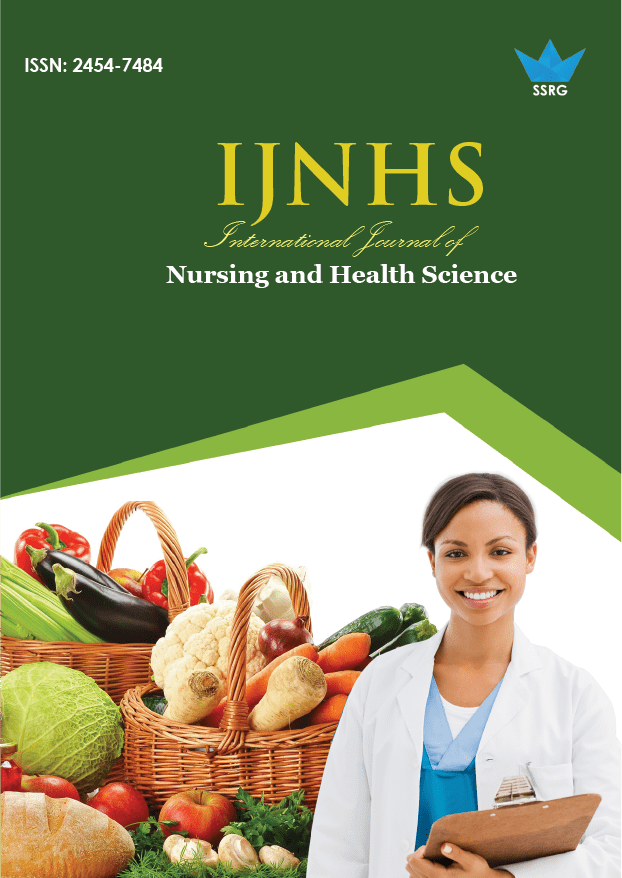The Journey from Lecture Only to a Flipped Classroom

| International Journal of Nursing and Health Science |
| © 2022 by SSRG - IJNHS Journal |
| Volume 8 Issue 2 |
| Year of Publication : 2022 |
| Authors : Susan Braud |
How to Cite?
Susan Braud, "The Journey from Lecture Only to a Flipped Classroom," SSRG International Journal of Nursing and Health Science, vol. 8, no. 2, pp. 21-25, 2022. Crossref, https://doi.org/10.14445/24547484/IJNHS-V8I2P105
Abstract:
Transitioning from a lecture to a flipped classroom involves flexibility, preparation, and continual learning for faculty. The flipped method involves pre-recording lectures and creating case studies, games, and discussions that encourage critical thinking and ownership of learning. A project was completed to determine the impact of implementing a flipped classroom method on first-semester undergraduate junior nursing students in a pharmacology course. A non-probability convenience sample was used that consisted of 94 students.
The study's outcome revealed no significant statistical difference (p=.63) in the flipped class's exam grades students in the flipped class. This finding demonstrates that students can understand content regardless of the method of instruction. However, course evaluations illustrated a need to improve the method of delivery and learning activities. The flipped method has been continued in pharmacology and incorporated in the sophomore-level health assessment course. Evaluations with the adjustments and revisions illustrate student learning and satisfaction in the courses. Faculty need to assess and evaluate their courses to ensure learning continually.
Keywords:
Flipped class, Active learning, Pharmacology, Nursing education, NCLEX.
References:
[1] Von Colln-Appling C & Giuliano D. A, “Concept Analysis of Critical Thinking: A Guide for Nurse Educators,” Nurse Education Today, vol. 49, pp. 106-109, 2017. Doi: 10.1016/j.nedt.2016.11.007.
[2] Khanova J, Roth M.T, Rodgers J.E, and McLaughlin J.E, “Student Experiences Across Multiple Flipped Courses in a Single Curriculum,” Medical Education, vol. 49, pp. 1038-1048, 2015. Doi: 10.1111/medu.12807.
[3] “The Essentials of Baccalaureate Education for Professional Nursing Practice,” American Association of Colleges of Nursing, 2021. [Online]. Available: https://www.aacnnursing.org/Portals/42/AcademicNursing/pdf/Essentials-2021.pdf
[4] NCLEX-RN Examination: Test Plan for National Council Licensure Examination for Registered Nurses, NCSBN, 2018. [Online]. Available: https://www.ncsbn.org/2019_RN_TestPlan-English.pdf
[5] Thomas V & Schuessler JB, “Using Innovative Teaching Strategies to Improve Outcomes in a Pharmacology Course,” Nursing Education Perspectives, vol. 37, no. 3, pp. 174-176, 2016.
[6] McElhany J, “Awakening Student Ownership: Transitioning to a Student-Centered Environment,” Art Education, vol. 70, no. 1, pp. 29-35, 2017.
[7] Lane-Kelso M, “The Pedagogy of Flipped Instruction in Oman,” The Turkish Online Journal of Educational Technology, vol. 14, no. 1, pp. 143-150, 2015.
[8] Geist M, Larimore D, Rawiszer H & Al Sager AW, “Flipped Versus Traditional Instruction and Achievement in a Baccalaureate Nursing Pharmacology Course,” Nursing Education Perspectives, vol. 36, no. 2, pp. 114-115, 2015. Doi: 10.5480/13-1292
[9] Jones J.P, McConnell D.A, Wiggen J.L & Bedward J, “Effects of Classroom “flipping” on Content Mastery and Student Confidence in an Introductory Physical Geology Course,” Journal of Geoscience Education, vol. 67, no. 3, pp. 195-210, 2019. Doi: 10.1080/10899995.2019.1568854.
[10] Jong M.S, “To Flip or Not to Flip: Social Science Faculty Members’ Concerns about Flipping the Classroom,” Journal of Computing in Higher Education, vol. 31, pp. 391-407, 2019. DOI: 10.1007/s12528-019-09217-y.
[11] Kim H. & Jang Y, “Flipped Learning with Simulation in Undergraduate Nursing Education,” Journal of Nursing Education, vol. 56, no. 6, pp. 329-336, 2017. DOI: 10.3928/01484834-20170518-03
[12] Dehghanzadeh S & Jafaraghaee F, “Comparing the Effects of Traditional Lecture and Flipped Classroom on Nursing Students’ Critical Thinking Disposition: A Quasi-Experimental Study,” Nurse Education Today, vol. 71, pp. 151-156, 2018. DOI: 10.1016/j.nedt.2018.09.027
[13] Murray L, McCallum C & Petrosino C, “Flipping the Classroom Experience: A Comparison of Online Learning to Traditional Lecture,” Journal of Physical Therapy Education, vol. 28, no. 3, pp. 35-41, 2014. Doi:10.1097/00001416-201407000-00006.
[14] Lawson A, Davis C, Son J, “Not All Flipped Classes are the same: Using Learning Science to Design Flipped Classrooms,” The Journal of Scholarship of Teaching and Learning, vol.19, no. 5, pp. 77-104, 2019.
[15] Jimenez-Gomez M.A, Cardenas-Becerril L, Velasquez-Oyola M.B, Carrillo-Pineda M & Baron-Diaz L.Y, “Reflective and Critical Thinking in Nursing Curriculum,” Rev.Latino-Am.Enfermagem, vol. 27, pp. e3173, 2019. Doi: 10.1590/1518-8345.2861.3173

 10.14445/24547484/IJNHS-V8I2P105
10.14445/24547484/IJNHS-V8I2P105